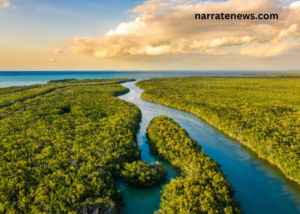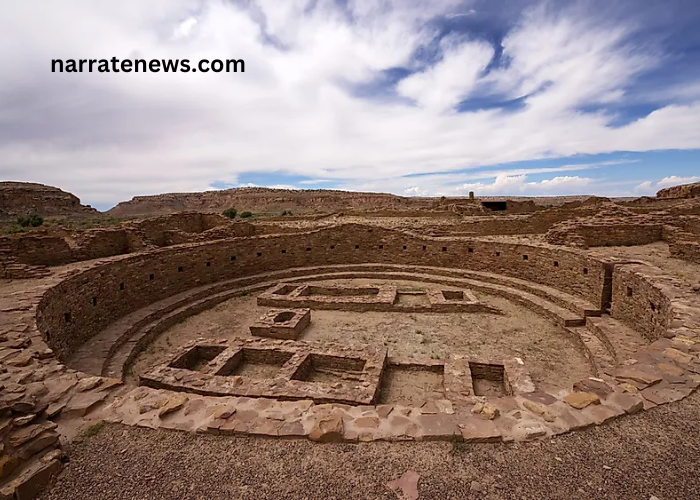
UNESCO World Heritage Sites in the United States
The United States, a land of diverse landscapes and rich cultural heritage, is home to a remarkable array of UNESCO World Heritage Sites. These sites, recognized for their outstanding universal value, contribute to the global tapestry of human history, culture, and natural wonders. In this comprehensive exploration, we will journey through the UNESCO World Heritage Sites in the United States, uncovering the stories, significance, and efforts to preserve these treasured landmarks.
UNESCO World Heritage Sites in the United States
1. Statue of Liberty (1984)
(1984)
Standing proudly in New York Harbor, the Statue of Liberty is not only an iconic symbol of freedom and democracy but also a UNESCO World Heritage Site. Dedicated in 1886 as a gift from France to the United States, Lady Liberty has welcomed countless immigrants arriving by sea. The statue’s designation as a World Heritage Site underscores its global significance as a beacon of hope and a testament to the enduring values of liberty and democracy.
2. Yellowstone National Park (1978)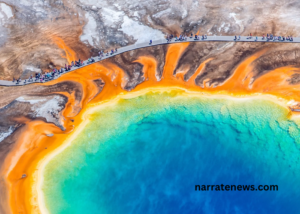
Yellowstone, America’s first national park, is a natural marvel and a UNESCO World Heritage Site. Spanning parts of Wyoming, Montana, and Idaho, Yellowstone is renowned for its geothermal wonders, including the iconic Old Faithful geyser, colorful hot springs, and diverse wildlife. The park’s designation recognizes its unique geological features and ecological importance, making it a global treasure for nature enthusiasts and scientists alike.
3. Grand Canyon National Park (1979)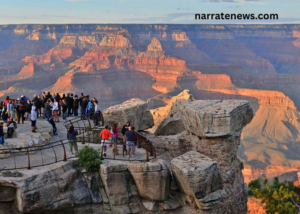
Carved by the mighty Colorado River over millions of years, the Grand Canyon is a UNESCO World Heritage Site that captivates visitors with its breathtaking beauty and geological significance. This vast canyon, with its layered rock formations and mesmerizing landscapes, stands as a testament to the power of erosion. Grand Canyon National Park draws millions of visitors each year, offering a glimpse into the Earth’s intricate history.
4. Independence Hall (1979)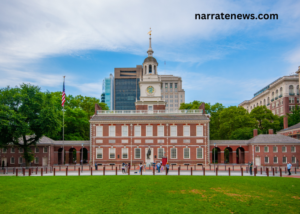
Located in the heart of Philadelphia, Independence Hall is a UNESCO World Heritage Site that played a pivotal role in the birth of the United States. This historic building was the backdrop for the signing of both the Declaration of Independence in 1776 and the United States Constitution in 1787. Recognized for its role in shaping the nation’s democratic principles, Independence Hall is a cherished symbol of American history and governance.
5. Monticello and the University of Virginia in Charlottesville (1987)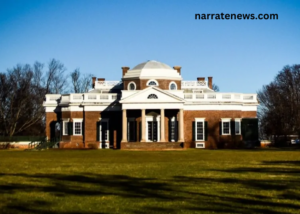
The architectural legacy of Thomas Jefferson, one of America’s Founding Fathers, is enshrined in Monticello and the University of Virginia, both UNESCO World Heritage Sites. Monticello, Jefferson’s plantation home, reflects his innovative design principles, while the University of Virginia showcases his vision for an academically centered community. These sites collectively celebrate Jefferson’s contributions to American architecture, education, and the ideals of the young nation.
6. Redwood National and State Parks (1980)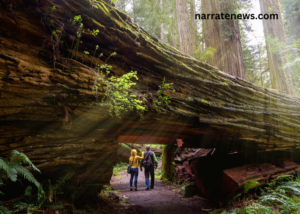
On the rugged coastline of Northern California, the towering giants of Redwood National and State Parks stand as a testament to the majesty of nature. Designated a UNESCO World Heritage Site for their outstanding biodiversity and the preservation of ancient redwood forests, these parks are home to some of the tallest trees on Earth. The delicate ecosystem of the redwoods is carefully protected, making these parks a haven for both environmentalists and those seeking solace in nature.
7. Everglades National Park (1979)
Florida’s Everglades, a vast and unique ecosystem, earned its designation as a UNESCO World Heritage Site for its unparalleled ecological importance. Home to a diverse array of wildlife, including alligators, manatees, and countless bird species, the Everglades play a crucial role in maintaining environmental balance. The park’s wetlands and mangroves are essential for water purification and serve as a sanctuary for numerous species facing threats elsewhere.
8. Mesa Verde National Park (1978)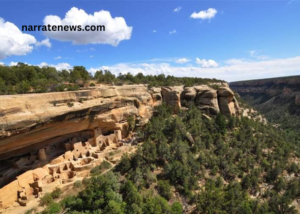
Nestled in the canyons of southwestern Colorado, Mesa Verde National Park is a UNESCO World Heritage Site that preserves the extraordinary archaeological heritage of the Ancestral Puebloan people. The park is renowned for its well-preserved cliff dwellings, showcasing the architectural ingenuity of the ancient inhabitants who thrived in the region for centuries. Mesa Verde stands as a window into the cultural and historical richness of Native American civilizations.
9. Great Smoky Mountains National Park (1983)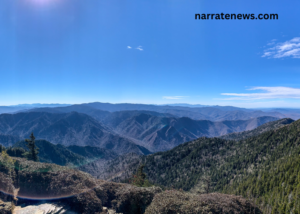
Straddling the border between North Carolina and Tennessee, the Great Smoky Mountains National Park is not only a UNESCO World Heritage Site but also a haven for biodiversity. Recognized for its diverse plant and animal life, including the synchronous fireflies that light up the forest each year, the park draws nature lovers, hikers, and photographers. The ethereal beauty of the mist-shrouded mountains contributes to the park’s allure.
10. Pueblo de Taos (1992)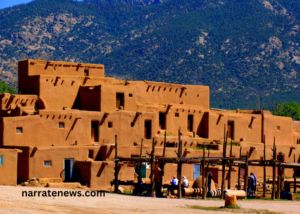
Nestled in the high desert of New Mexico, Pueblo de Taos is a UNESCO World Heritage Site that embodies the living traditions of the Taos Pueblo people. The multi-storied adobe dwellings, some dating back over a thousand years, showcase the architectural and cultural resilience of this Native American community. Pueblo de Taos remains a vibrant testament to the enduring connection between the Taos Pueblo people and their ancestral lands.
11. Cahokia Mounds State Historic Site (1982)
In Illinois, the Cahokia Mounds State Historic Site preserves the remnants of the largest pre-Columbian Native American city north of Mexico. Designated a UNESCO World Heritage Site, Cahokia Mounds features earthen mounds that once supported a sophisticated urban center around 1,000 years ago. The site provides invaluable insights into the complex social, religious, and economic practices of ancient Mississippian cultures.
12. Mammoth Cave National Park (1981)
Beneath the rolling hills of Kentucky lies the intricate subterranean world of Mammoth Cave, a UNESCO World Heritage Site. This expansive cave system is the longest in the world, with intricate passageways, colossal chambers, and unique geological formations. Mammoth Cave National Park offers visitors a glimpse into the mysterious and awe-inspiring realm beneath the Earth’s surface.
13. Chaco Culture National Historical Park (1987)
In the arid landscapes of northwestern New Mexico, Chaco Culture National Historical Park preserves the remnants of an ancient Puebloan cultural and economic hub. Designated a UNESCO World Heritage Site, Chaco Canyon features monumental architecture, including the Great Kiva and Pueblo Bonito, that reflects the advanced understanding of astronomy and engineering among its ancient inhabitants.
14. Olympic National Park (1981)
Spanning diverse ecosystems from alpine peaks to temperate rainforests and coastal shores, Olympic National Park in Washington state is a UNESCO World Heritage Site of ecological significance. The park’s designation acknowledges its extraordinary biodiversity and the protection of pristine wilderness. Visitors to Olympic National Park can experience the contrasts of snow-capped mountains, lush forests, and rugged coastline within a single day.
15. Waterton Glacier International Peace Park (1995)
Straddling the border between the United States and Canada, the Waterton Glacier International Peace Park is a UNESCO World Heritage Site that symbolizes the shared commitment to environmental conservation. Combining Glacier National Park in Montana and Waterton Lakes National Park in Alberta, Canada, this transboundary park celebrates the beauty of the Rocky Mountains and the importance of international cooperation in preserving natural wonders.
16. Carlsbad Caverns National Park (1995)
Beneath the Chihuahuan Desert in New Mexico lies the mesmerizing underground world of Carlsbad Caverns, designated a UNESCO World Heritage Site. The park is renowned for its intricate cave formations, including the stunning Big Room, one of the largest cave chambers in North America. Carlsbad Caverns National Park offers visitors the opportunity to explore the mysterious depths of a subterranean realm.
17. Papahānaumokuākea (2010)
Encompassing the Northwestern Hawaiian Islands, Papahānaumokuākea is a UNESCO World Heritage Site and the largest protected marine area in the world. This vast expanse of ocean and atolls is home to a diverse array of marine life, including endangered species and unique coral formations. The site’s designation recognizes the importance of preserving marine ecosystems and the cultural significance of the area to Native Hawaiian traditions.
18. San Antonio Missions (2015)
Comprising a group of five frontier outposts established by Spanish Franciscan missionaries in the 18th century, the San Antonio Missions are a UNESCO World Heritage Site. These missions, including the famous Alamo, played a crucial role in the cultural and religious assimilation of Native American populations. The site’s designation acknowledges the interconnected history of Spanish colonization and the cultural exchange that occurred in the region.
19. Monumental Earthworks of Poverty Point (2014)
In northeastern Louisiana, the Monumental Earthworks of Poverty Point is a UNESCO World Heritage Site that preserves the remnants of an ancient ceremonial and residential complex. Dating back over 3,000 years, the site features a series of mounds and earthen ridges arranged in a complex geometric pattern. Poverty Point provides insights into the sophisticated social and engineering practices of its ancient inhabitants.
20. Frank Lloyd Wright Buildings (2019)
The architectural masterpieces of Frank Lloyd Wright, spanning across several states, collectively earned a UNESCO World Heritage Site designation in 2019. This serial site includes iconic structures such as Fallingwater in Pennsylvania, the Guggenheim Museum in New York, and Taliesin in Wisconsin. The designation recognizes Wright’s unparalleled contributions to modern architecture and the enduring impact of his innovative designs.
Preservation Challenges and Conservation Efforts
While these UNESCO World Heritage Sites are celebrated for their cultural and natural significance, many face ongoing challenges that threaten their integrity. These challenges include climate change, habitat degradation, urbanization, and the impact of tourism. Conservation efforts, often led by dedicated park authorities, local communities, and international organizations, aim to strike a delicate balance between preserving the sites and making them accessible to the public.
Climate Change Impacts:
Climate change poses a significant threat to several World Heritage Sites. Rising temperatures, altered precipitation patterns, and extreme weather events can affect ecosystems, endanger species, and accelerate the deterioration of cultural monuments. Adaptive measures and sustainable practices are crucial for mitigating these impacts.
Tourism Management:
The popularity of UNESCO World Heritage Sites attracts millions of visitors each year, contributing to the local economies but also presenting challenges in terms of site management. Sustainable tourism practices, visitor education, and controlled access are essential components of preserving the sites for future generations.
Cultural Heritage Conservation:
Many cultural heritage sites face threats from urbanization, inadequate infrastructure, and even conflicts. Preservation efforts involve meticulous conservation practices, community engagement, and international collaboration to ensure the protection of these sites and their intrinsic values.
Biodiversity Conservation:
UNESCO World Heritage Sites that are designated for their natural values, such as Yellowstone National Park and the Great Smoky Mountains, require vigilant efforts to safeguard biodiversity. Conservation initiatives include habitat restoration, species protection, and scientific research to monitor and manage ecosystems.
Collaborative Initiatives:
The collaborative efforts of governments, local communities, non-governmental organizations, and international bodies are critical for the sustained preservation of World Heritage Sites. Partnerships facilitate the sharing of resources, expertise, and best practices to address complex challenges.
Conclusion: Stewards of Our Heritage
The UNESCO World Heritage Sites in the United States are not merely monuments frozen in time; they are living testaments to the interwoven tapestry of natural wonders and cultural legacies. These sites invite us to explore the complexities of our shared history, appreciate the marvels of nature, and reflect on the responsibility we bear as stewards of our heritage.
As we marvel at the towering redwoods, traverse the expansive canyons, and trace the footsteps of those who shaped our nation’s history, we are reminded of the profound connections that bind us to the past and guide us toward the future. The designation of these sites as World Heritage Sites is a global recognition of their universal value, emphasizing the need for collective action to protect and preserve the treasures they embody.
In our journey through these UNESCO World Heritage Sites, we are called to embrace the role of guardians, advocates, and participants in the ongoing narrative of conservation and appreciation. The stories etched in the landscapes and structures of these sites beckon us to tread lightly, to learn from the past, and to envision a future where the wonders of our world endure for generations to come.
